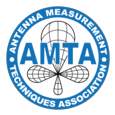US Army, November 1981
The US Army Electronic Proving Ground is in Southeastern Arizona with outlying facilities located throughout Southern Arizona. The Proving Ground is an independent test and evaluation activity under the command of the US Army Test and Evaluation Command. It was established in 1954. EPG’s role in the material acquisition cycle is to conduct development (DT I & II), initial production (first article), and such other engineering (laboratory-type) tests and associated analytical studies of electronic materiel as directed. The results (reports) of these efforts are used by the developer to correct faults, and by Army and DOD decision-makers in determining the suitability of these materiels/systems for adoption and issue. Customer tests to satisfy specific customer requirements and foreign materiel exploitations are also done. EPG is assigned test responsibility for Army ground and airborne (aircraft-mounted) equipment/systems which utilize the electromagnetic spectrum to include: tactical communications; COMSEC (TEMPEST testing included); combat surveillance, and vision equipment (optical, electro-optical, radar, unattended sensors); intelligence acquisition; electronic warfare; radiac; imaging and image interpretation (camera, film, lens, electro-optical); camouflage; avionics; navigation and position location; remotely piloted vehicle; physical security; meteorological; electronic power generation, and tactical computers and associated software. Facilities and capabilities to perform this mission include: laboratories and electronic measurement equipment; antenna pattern measurement’ both free-space and ground-influenced; unattended and physical security sensors; ground and airborne radar target resolution and MTI; precision instrumentation radars in a range configuration for position and track of aerial and ground vehicles; climatic and structural environmental chambers/equipment; calibrated nuclear radiation sources; electromagnetic compatibility, interference and vulnerability measurement and analysis; and other specialized facilities and equipment. The Proving Ground, working in conjunction with a DOD Area Frequency Coordinator, can create a limited realistic electronic battlefield environment. This capability is undergoing significant development and enhancement as a part of a program to develop and acquire the capability to test Army Battlefield Automation Systems, variously called C3I, C4, and/or CCS2 systems. The three principal elements of this capability which are all automated include: Systems Control Facility (SCF), Test Item Stimulator (TIS), and Realistic Battlefield Environment, Electronic (REBEEL). In addition to various instrumentation computers/processors, EPG currently utilizes a DEC Cyber 172, a DEC VAX 11-780, a DEC System 10, and has access to both a CDC 6500 and a 6600. Under the Army Development and Acquisition of Threat Simulators (ADATS) program, EPG is responsible for all non-air defense simulators. The availability of massive real estate in Southern Arizona, which includes more than 70,000 acres on Fort Huachuca, 23,000 acres at Willcox Dry Lake, and 1.5 million acres near Gila Bend, is a major factor in successful satisfaction of our test mission. Fort Huachuca itself is in the foothills of the Huachuca Mountains at an elevation of approximately 5,000 feet and has an average annual rainfall of less than 15 inches. Flying missions are practical almost every day of the year. The Proving Ground is ideally situated between two national ranges and provides overlapping, compatible instrumentation facilities for all types of in-flight test programs. The clear electromagnetic environment, the excellent climatic conditions, and the freedom from aircraft congestion make this an unusually fine area for electronic testing. The Proving Ground consists of a multitude of sophisticated resources, many of them unique in the United States, which are an integral part of the USAEPG test facility and have resulted from an active local research and development effort over a 28-year period.
